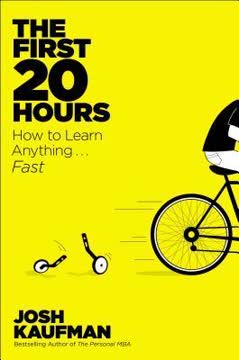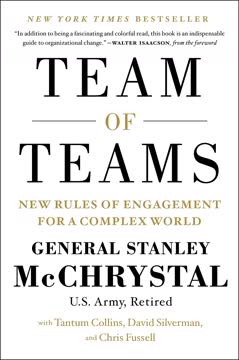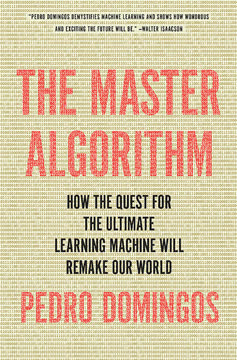Key Takeaways
1. The Smart Machine Age demands a new definition of "smart"
NewSmart is a new definition of human smart that reflects the increasing cognitive capabilities of smart machines and is measured not by quantity—how much you know—but by the quality of your thinking, learning, and emotionally engaging with others.
Redefining intelligence. In the Smart Machine Age (SMA), machines will surpass humans in processing, remembering, and synthesizing information. To remain relevant, humans must excel at critical thinking, innovative thinking, creativity, and high emotional engagement – skills that complement technology or that technology cannot yet replicate.
Embracing NewSmart. This new paradigm of intelligence, called NewSmart, focuses on:
- Quality of thinking, not quantity of knowledge
- Ability to learn and adapt rapidly
- Emotional intelligence and interpersonal skills
- Embracing mistakes as learning opportunities
- Treating beliefs as hypotheses to be tested
Overcoming cognitive biases. Humans must recognize and mitigate their natural tendencies towards:
- Confirmation bias
- Emotional defensiveness
- Reflexive thinking
- Fear of failure and uncertainty
2. Humility is the gateway to human excellence in the SMA
We define Humility as a mindset about oneself that is open-minded, self-accurate, and "not all about me," and that enables one to embrace the world as it "is" in the pursuit of human excellence.
Redefining humility. Contrary to common perceptions, humility is not about being meek or subdued. In the context of the SMA, humility is:
- An intellectual strength
- A cornerstone of critical thinking
- Essential for open-mindedness and continuous learning
Benefits of humility. Embracing humility enables individuals to:
- Acknowledge their limitations and seek help from others
- Be open to new ideas and perspectives
- Keep achievements in perspective
- Focus less on self and more on understanding others
- Adapt more easily to changing environments
Humility in practice. Organizations like Google, Pixar, and the US Navy SEALs have recognized the value of humility in fostering innovation, collaboration, and high performance. They actively seek individuals who demonstrate intellectual humility and the ability to learn from mistakes.
3. Quieting ego enables higher-level thinking and emotional engagement
Quieting Ego is how we can deliberately work to reduce our reflexive emotional defensiveness; have empathy and open-mindedness; engage in Reflective Listening; and proactively seek other people's feedback and perspectives to stress-test our own thinking.
Mindfulness practices. Quieting ego often involves mindfulness techniques, which help individuals:
- Pay attention to the present moment without judgment
- Recognize thoughts and emotions without being controlled by them
- Enhance cognitive function and emotional regulation
Benefits of a quiet ego:
- Improved focus and attention
- Enhanced ability to consider multiple perspectives
- Reduced emotional reactivity
- Increased empathy and understanding of others
- Better collaboration and relationship-building skills
Practical strategies. To quiet the ego:
- Practice daily mindfulness meditation
- Cultivate gratitude
- Use reminders to stay present and humble
- Seek feedback and different viewpoints actively
- Reframe situations to reduce emotional defensiveness
4. Managing self: Mastering thoughts and emotions is crucial
Managing Self—our emotions and thinking—aids us in engaging in the higher-level thinking and behavior required by SMA Skills.
Cognitive management. Develop a "thinking toolbox" that includes:
- Critical thinking processes
- Problem-solving frameworks
- Decision-making tools (e.g., PreMortem, After-Action Review)
- Creativity and innovation techniques
Emotional intelligence. Enhance your ability to:
- Recognize and label emotions in yourself and others
- Understand the causes and consequences of emotions
- Regulate emotions effectively
- Use emotions to facilitate thinking and decision-making
Practical techniques:
- Practice psychological distancing
- Reframe negative situations
- Use positive memories to counter negative emotions
- Engage in positive self-talk
- Develop "if-then" implementation plans for emotional challenges
5. Reflective listening is essential for collaboration and innovation
Reflective Listening is so important because it underlies all the SMA Skills. Why? Because your thinking and learning are limited by cognitive biases, emotional defensiveness, ego, and fear.
Key elements of reflective listening:
- Focus entirely on the speaker without interrupting
- Seek to understand before responding
- Ask clarifying questions
- Paraphrase and summarize to confirm understanding
- "Try on" the speaker's ideas before evaluating them
Benefits of reflective listening:
- Enhances collaboration and teamwork
- Fosters innovation by considering diverse perspectives
- Builds trust and strengthens relationships
- Improves problem-solving and decision-making
- Reduces misunderstandings and conflicts
Practical strategies:
- Practice mindfulness to stay present during conversations
- Use a pre-listening checklist to prepare mentally
- Focus on asking questions rather than making statements
- Reflect on your listening performance after each interaction
6. Otherness: Connecting emotionally with others drives success
By now, we hope that you understand how important it is to seek the help of others to thrive in the SMA. We need others because we can't think, innovate, or relate at our best alone.
Building meaningful connections. To excel in the SMA, focus on:
- Being present and genuine in interactions
- Communicating affirmation and support
- Demonstrating empathy and understanding
- Fostering trust through vulnerability and authenticity
Benefits of emotional connection:
- Enhanced collaboration and teamwork
- Increased creativity and innovation
- Improved problem-solving capabilities
- Higher job satisfaction and engagement
- Better customer relationships and service
Practical techniques:
- Practice active listening and empathy
- Show genuine interest in others' perspectives
- Use positive language and body language
- Cultivate a culture of mutual support and appreciation
- Regularly check in with colleagues on a personal level
7. Creating a NewSmart organization fosters human excellence
We believe that the organization of the future will need to be a people-centric, hyperlearning organization that fuses the best technologies and the best human learners to excel at innovating to meet the needs of its stakeholders.
Key elements of a NewSmart organization:
- People-centric culture
- Continuous learning and development focus
- Emphasis on collaboration over competition
- Psychological safety for risk-taking and innovation
- Leadership that models humility and continuous improvement
Organizational practices:
- Design work environments that promote positivity
- Meet employees' self-determination needs (autonomy, competence, relatedness)
- Implement processes that drive critical thinking and innovation
- Provide regular feedback and opportunities for growth
- Measure and reward behaviors that align with NewSmart principles
Benefits of NewSmart organizations:
- Increased adaptability to technological changes
- Higher employee engagement and retention
- Enhanced innovation and problem-solving capabilities
- Improved customer satisfaction and market performance
- Sustainable competitive advantage through continuous learning and improvement
Human Verification: I am a real human and this is my original work, not copied from anywhere else.
Last updated:
FAQ
What's "Humility Is the New Smart" about?
- Overview: "Humility Is the New Smart" by Edward D. Hess and Katherine Ludwig explores how individuals and organizations can thrive in the Smart Machine Age (SMA) by embracing humility and redefining what it means to be smart.
- SMA Context: The book discusses the transformative impact of technology, such as AI and automation, on the workforce and the need for humans to excel at skills that machines cannot replicate.
- Core Argument: The authors argue that humility, defined as an open-minded, self-accurate mindset, is crucial for human excellence in the SMA.
- Practical Guidance: It provides practical advice on developing NewSmart behaviors, such as quieting the ego, managing self, reflective listening, and emotionally connecting with others.
Why should I read "Humility Is the New Smart"?
- Future-Proofing Skills: The book offers insights into developing skills that will remain relevant as technology advances, helping readers stay competitive in the job market.
- Personal Growth: It encourages personal development by promoting humility and self-awareness, which can lead to better decision-making and relationships.
- Organizational Success: Leaders and managers can learn how to create environments that foster innovation and collaboration, essential for organizational success in the SMA.
- Actionable Advice: The book provides practical tools and exercises to help readers implement the concepts in their personal and professional lives.
What are the key takeaways of "Humility Is the New Smart"?
- Redefining Smart: Being smart is not about knowing more but about the quality of thinking, learning, and emotional engagement with others.
- Embracing Humility: Humility is a mindset that involves being open-minded, self-accurate, and not self-centered, enabling better learning and collaboration.
- NewSmart Behaviors: The book outlines four key behaviors—Quieting Ego, Managing Self, Reflective Listening, and Otherness—that are essential for thriving in the SMA.
- Organizational Change: Successful organizations will need to create environments that promote these behaviors and meet employees' needs for autonomy, relatedness, and competence.
How does "Humility Is the New Smart" define humility?
- Mindset Definition: Humility is defined as a mindset about oneself that is open-minded, self-accurate, and "not all about me," enabling one to embrace the world as it is.
- Intellectual Humility: It involves acknowledging the partial nature of one's understanding and valuing others' intelligence, which boosts learning and collaboration.
- Cultural Shift: The book argues for a shift from a "big me" culture to a "big us" culture, where collaboration and team success are prioritized over individual achievement.
- Practical Application: Humility helps mitigate ego and fear, which are major inhibitors of learning and innovation.
What is the NewSmart concept in "Humility Is the New Smart"?
- Quality Over Quantity: NewSmart is a new definition of being smart, focusing on the quality of thinking, listening, and collaborating rather than the quantity of knowledge.
- Five Principles: The book outlines five principles of NewSmart, including being defined by the quality of one's thinking and treating beliefs as hypotheses to be tested.
- Ignorance Embraced: It encourages being good at not knowing and being open to learning from mistakes and failures.
- Behavioral Change: NewSmart requires adopting behaviors that support continuous learning and emotional engagement with others.
What are the NewSmart Behaviors outlined in "Humility Is the New Smart"?
- Quieting Ego: This involves reducing emotional defensiveness and self-focus to better perceive reality and engage with others.
- Managing Self: It includes managing one's thinking and emotions to remain open-minded and willing to learn from mistakes.
- Reflective Listening: This behavior emphasizes listening to understand rather than to confirm one's own beliefs, fostering better collaboration.
- Otherness: It involves emotionally connecting and relating to others, which is crucial for building trust and effective teamwork.
How does "Humility Is the New Smart" suggest managing self?
- Slowing Down: The book emphasizes the importance of slowing down to engage in deliberate, intentional thinking and decision-making.
- Thinking Tools: It provides tools and processes for managing thinking, such as critical thinking questions and stress-testing beliefs.
- Emotional Management: Techniques for managing emotions include breathing exercises, psychological distancing, and positive self-talk.
- Emotional Intelligence: Developing emotional intelligence is crucial for understanding and responding appropriately to one's own and others' emotions.
What role does mindfulness play in "Humility Is the New Smart"?
- Quieting Ego: Mindfulness is presented as a key practice for quieting the ego, allowing individuals to perceive reality more clearly and reduce self-focus.
- Present Moment Awareness: It involves paying attention in a particular way—on purpose, in the present moment, and nonjudgmentally.
- Emotional Regulation: Mindfulness helps in regulating emotions, reducing stress, and improving cognitive functioning.
- Practical Exercises: The book suggests mindfulness meditation and other exercises to develop this practice and enhance personal and professional interactions.
How does "Humility Is the New Smart" address organizational change?
- Human-Centric Approach: The book advocates for organizations to create environments that are emotionally positive and meet employees' needs for autonomy, relatedness, and competence.
- Psychological Safety: It emphasizes the importance of psychological safety, where employees feel safe to take risks and speak up without fear of retribution.
- Leadership Role: Leaders are encouraged to role-model NewSmart behaviors and create a culture that values learning, collaboration, and innovation.
- Process Implementation: Organizations should implement processes that drive critical thinking, innovation, and continuous learning.
What are the best quotes from "Humility Is the New Smart" and what do they mean?
- "Humility is the gateway to human excellence in the SMA." This quote highlights the central thesis that humility is essential for thriving in the Smart Machine Age.
- "I am not my ideas." This emphasizes the importance of decoupling one's ego from one's beliefs, allowing for open-mindedness and learning.
- "Mistakes are learning opportunities." The book encourages viewing mistakes as a natural part of the learning process, essential for innovation and growth.
- "We are what we repeatedly do. Excellence, then, is not an act, but a habit." This underscores the importance of consistent practice and behavior in achieving excellence.
How does "Humility Is the New Smart" suggest implementing NewSmart Behaviors?
- Assessment Tool: The book provides a NewSmart Behaviors Assessment Tool to help individuals identify strengths and areas for improvement.
- Deliberate Practice: It emphasizes the importance of deliberate practice, focusing on specific sub-behaviors to develop expertise.
- Feedback and Reflection: Regular feedback and reflection are encouraged to track progress and make necessary adjustments.
- Personal Improvement Plan: Readers are guided to create a personal improvement plan based on their assessment results and goals.
What is the significance of the Smart Machine Age (SMA) in "Humility Is the New Smart"?
- Technological Transformation: The SMA represents a period of rapid technological advancement, where machines increasingly perform tasks previously done by humans.
- Human Skills Needed: The book argues that humans will need to excel at skills that complement technology, such as critical thinking, creativity, and emotional engagement.
- Disruption and Opportunity: While the SMA poses challenges, it also offers opportunities for those who can adapt and develop the necessary skills.
- Cultural Shift: The SMA requires a cultural shift towards humility, collaboration, and continuous learning to navigate the changes effectively.
Review Summary
Humility Is the New Smart receives mixed reviews, with an average rating of 3.62/5. Some praise its insights on adapting to AI and automation, emphasizing emotional intelligence and collaboration. Critics find it repetitive, lacking originality, and overly focused on business examples. Readers appreciate the book's emphasis on mindfulness, self-reflection, and improved interpersonal skills. However, some feel it fails to deliver on its promise of addressing the "Smart Machine Age" and instead rehashes familiar self-help concepts.
Similar Books










Download PDF
Download EPUB
.epub digital book format is ideal for reading ebooks on phones, tablets, and e-readers.





